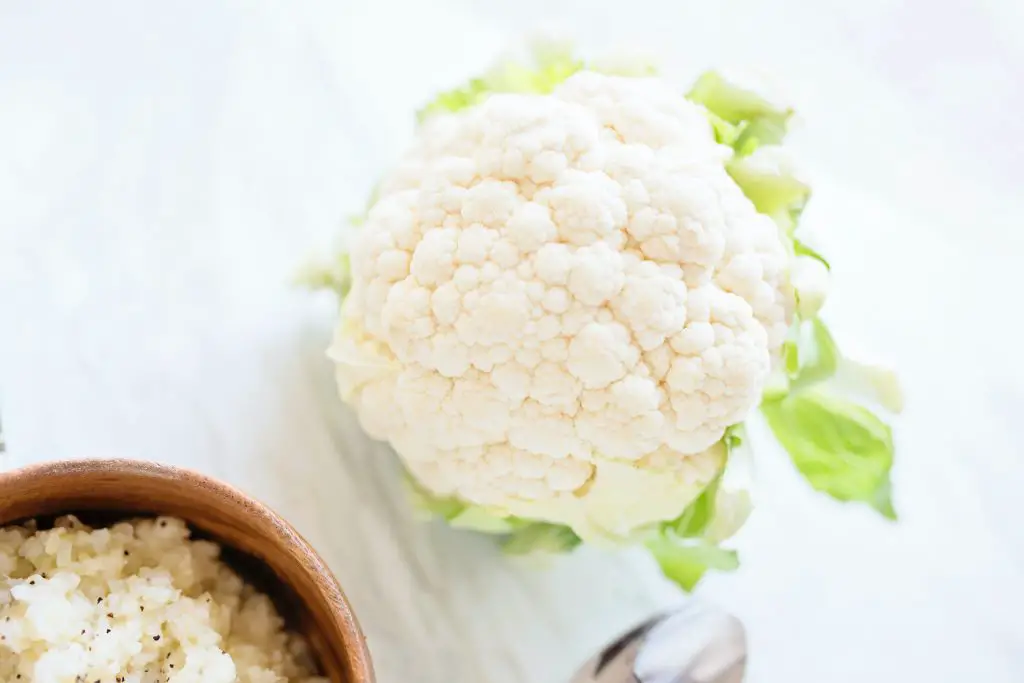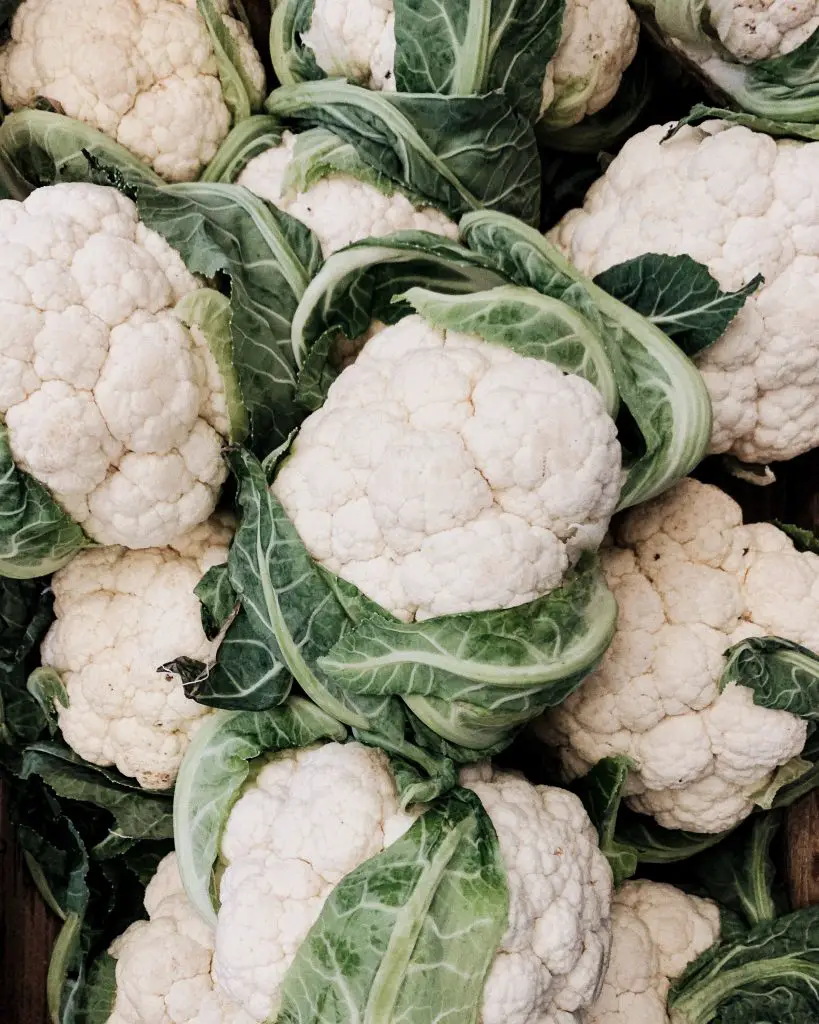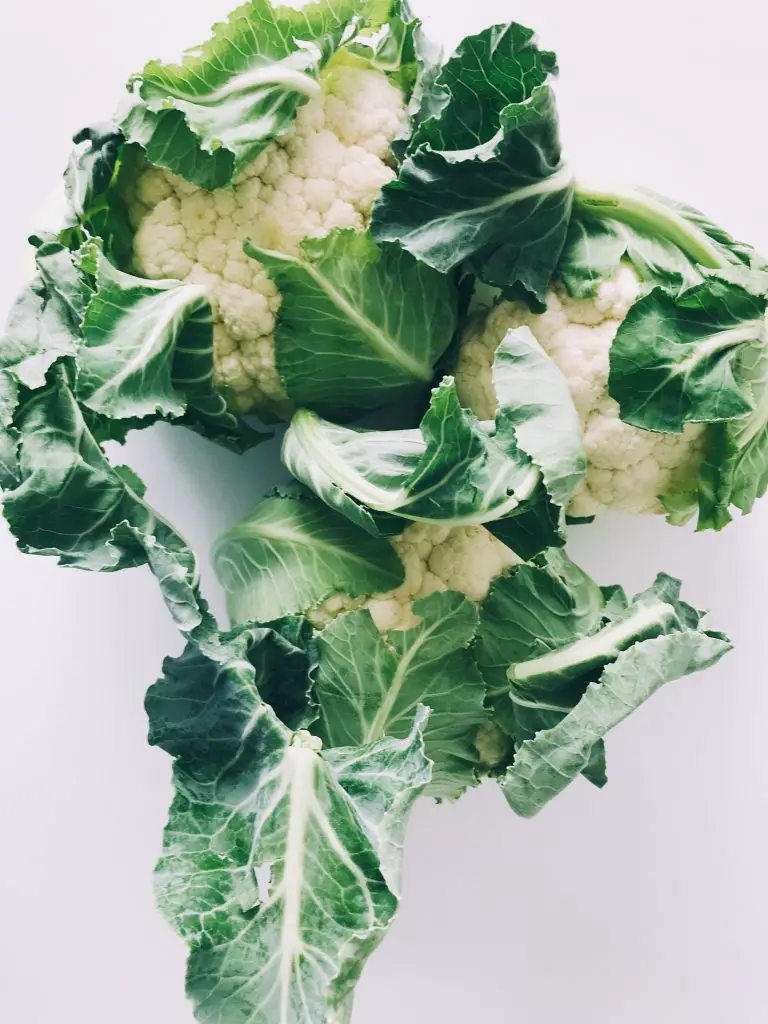Does Cauliflower Grow Underground? Cauliflower is one of the most popular winter vegetables available in the supermarket. It is widely used in a range of cuisines including European and Indian subcontinent dishes. However, if you are not a gardener you may be wondering how to cauliflowers actually grow. Do they grow above ground or below ground?
Cauliflowers are not grown below ground, they are a winter vegetable that is produced from a shrub-like plant that is approximately 1 to 2 ft tall. The section of the cauliflower that we are actually eating is an immature flower. Each cauliflower plant generally only produces a single flower which is cut and removed from the plant.
Once the Cauliflower head has been removed from the plant it will not produce another cauliflower and the plant is typically removed from the garden at this point. Cauliflower is most commonly white, however, they do come in green, purple, and yellow colors as well. Additionally, the Cauliflower varieties can be categorized based on blanching or non-blanching varieties.

Blanching varieties are those in which the outer of leaves cover the flowerhead when it is developing, whereas a non-blanching variety will have the head exposed to the sunlight. The advantage of blanching varieties is that it improves the appearance of the head of cauliflower. Cauliflower heads that are exposed to sunlight will yellow over time which detracts from the shelf appeal.
However, even though these cauliflower heads don’t look particularly appetizing they are still quite edible.
To produce a white head on a non-blanching variety many gardeners simply use a peg to wrap leaves around the top of the flower to prevent them from being exposed to light.
About Cauliflower
Cauliflower is a member of the brassica family which includes vegetables such as cabbage, broccoli, brussels sprouts, kale, cabbage, and kohlrabi. The brassica family evolved in Europe and has been known for thousands of years. However, cauliflower is a relatively recent addition to that family being only around about 1000 years old.
The plant itself evolved from wild cabbage along with several other plants that we commonly eat. However, many people may be surprised to learn that cauliflower is actually the same species, Brassica oleracea, as several other members of the brassica family. So for example cauliflower and broccoli may be considered varieties of each other rather than separate species.

For those that are unfamiliar with the definition of a species, two different plants are considered the same species when they can cross-pollinate to produce viable offspring. As a result of this things like broccoflower have been produced.
The earliest forms of cauliflower appeared in Europe in the 12th and 13th centuries with the vegetable being strongly associated with the island of Cyprus. However, due to traders transferring seeds around Europe cauliflower quickly became a mainstay in places like France from the 16th century onwards and today the plant is grown all over the world.
Is Cauliflower Easy To Grow?
Cauliflower is one of the more challenging brassicas to grow because it does not like hot weather and really can only be successfully grown in the cooler parts of the year through autumn, winter, and spring. The reason for this is that in hot weather the cauliflower heads quickly separate and run to seed which means that the quality of the curds that are produced from the plant are relatively poor. The plant grows best when the temperatures are around 70F.
This means that the sowing of the seeds is generally limited from the periods of late summer through to early spring. The seeds can be sown in late summer because it will take at least 6 to 8 weeks after that period before the plant is beginning to develop a head by which time the weather has cooled sufficiently to be ideally suited for growing cauliflower.
Sowing at this time is also ensures that the cauliflowers are able to sufficiently develop in the garden prior to the weather getting too cold. If the heads are approaching the point at which they are ready to be harvested at the point where the weather is becoming quite cold this is ideal because they can sit in the garden for a period of time.

How To Grow Cauliflower
As mentioned above the ideal time to plant cauliflower seeds is either in late summer or the early part of winter unless you live in a climate that has relatively mild winters. In these conditions, cauliflower can be sowed up to mid-autumn.
Cauliflower seeds can be sown directly into the garden however we generally recommend that they are planted in seed trays irrespective of the time of year that there are sown. The reason for this is in summer your garden will be occupied with summer crops at the time of the year which means you need to sow them into trays to ensure that you can get the plant going while waiting for space to appear.
In winter it is generally too cold for the seeds to germinate quickly it is therefore recommended that you sow seeds in trays that can be brought inside and placed in a warm location. However, if you are doing lots of seed sowing at that time of year we highly recommend that you purchase a heated propagation tray because it is easier to control the temperature and humidity.
If you are considering purchasing a seed tray the one where we would recommend is the iPower seed germination kit which features a removable seed tray and humidity dome. The removable seed tray is advantageous because this is the part of the unit that will deteriorate first. Being able to replace this component will substantially extend the life of the unit.
The other important feature is the humidity dome which helps to retain the heat and moisture given to the seedlings. To see the latest price for this item click on the link below.
When planting the seeds start by filling the seed tray with a good quality seed raising mix and ensure that you press the soil down into the individual cells and to ensure that you create a firm plug in which to plant. Plant 2 to 3 seeds per cell to ensure that at least one seed comes up. In cases where all the seedlings germinate thin the seedlings to the strongest one.
Once planted the seeds will typically take 7 to 14 days to germinate and they will need to spend approximately 6 weeks in the seed tray before they are large enough to plant outside. As such the ideal time to plant the seeds is approximately 6 weeks prior to the last frost.
Planting Cauliflower Seedlings Into The Garden
When the seedlings are large enough to plant out into the garden they should be spaced approximately 15 inches apart as the plants are relatively large when they mature.
In terms of soil conditions, cauliflower prefers rich moist, and free-draining soil that has plenty of nutrients. If you are unsure whether there are sufficient nutrients in the soil it is advisable to dig in a bag of compost before planting the seedlings out into the garden
It is also a good idea to mulch around the plants to ensure that they are able to retain any moisture that is given to the plants. Additionally, the seedlings are initially quite susceptible to attack from slugs and snails, it is advisable to apply snail bait around the base of the plants to give them some protection.
Once the plants begin to develop leaves of significant size is a good idea to keep an eye on whether the plant has started to develop a cauliflower head. Once you see cauliflower heads beginning to develop it is a good idea to peg the outer leaves together loosely to ensure that the head is not exposed to light.

At this point, it is important to keep an eye on the cauliflower curds to ensure that they remain in good condition. Cauliflower can be harvested at any stage once the head reaches a reasonable size. However, it is important at this stage to keep a close eye on the quality of the head to ensure that the curds remain tight. If the curds begin to show signs of separation the cauliflower should be harvested immediately.
Once the cauliflower plant has been harvested it will not produce any further flowers and can therefore be removed at any stage.
If you end up with a glut of cauliflower in your garden it is important to pick them when they are at their best and then freeze them. When freezing them they will need to be blanched in hot water for 1 to 2 minutes.
I hope you found this article useful and have great success growing cauliflower at home, if you have any additional questions or comments please leave them in the section below.
Relevant Articles
Can Cauliflower Grow In Summer?
How Many Cauliflowers Do You Get From One Plant?

